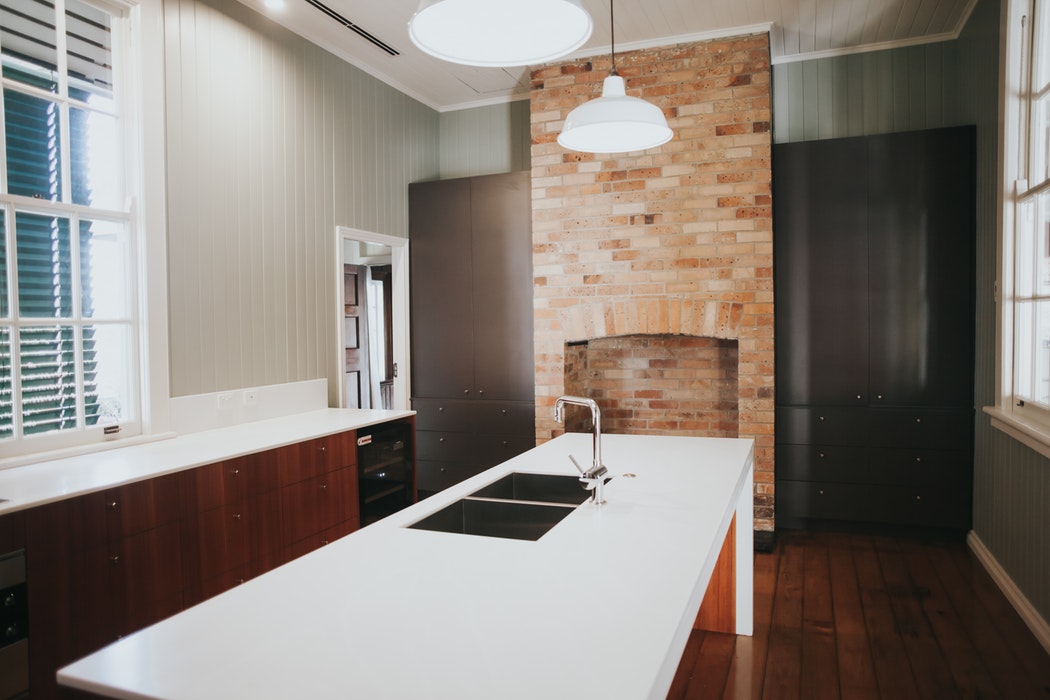 Are you interested in installing a kitchen faucet? Are you not sure about the tools and materials you will need? Are you not sure about the right procedure to use during the kitchen faucet installation process? This article will help you solve all your concerns when it comes to kitchen faucet installation.
Are you interested in installing a kitchen faucet? Are you not sure about the tools and materials you will need? Are you not sure about the right procedure to use during the kitchen faucet installation process? This article will help you solve all your concerns when it comes to kitchen faucet installation.
Kitchen faucets are considered to be among the grimiest spots in any home. Dirty hands will always turn the faucet on. Immediately after handling cookie dough or raw meat, germs will quickly spread to the handles. Unless you do sanitize the faucet frequently or after every use, filth will quickly build up.
In case you are interested in banishing bacteria for good, it is advisable that you install a hands-free kitchen faucet. This device is motion activated hence it will register the movements of your hands and it will automatically turn on when you need to wash. It is known to be a win situation. It will help you save water and time as well as help you boost your health. Installing a touch less kitchen faucet is very simple.
Contents
Materials Required
- Tape Measure
- Screw Driver
- Drill
- Batteries
- 3/32 drill bit
- Adjustable wrench
- No touch faucet and included hardware
Procedure: How to Install a Kitchen Faucet
Place the Faucet
- Turn off both the cold and hot water supplies to the kitchen sink. Have the old faucet removed and then thread the data cable, shank and hoses of the new faucet through desk gasket. Ensure it is aligned to the faucet body bottom.
- Thereafter, you can insert the hoses, cable, and shank through mounting hole. In case there are several holes, you will need to install a deck plate.
- Ensure that the faucet handle is placed on the right side and that the faucet is facing you before moving on.
Ensure Faucet is secured
- Have the support plate located under the sink and over the cables moved. Thereafter, move the mounting washer on the faucet shank.
- Ensure that the hoses and data cable are located within the washer faucet.
- Thread mounting nut onto the faucet shank and ensure that the faucet is correctly positioned onto the sink or counter. Then, tighten the nut using an installation tool.
- Important Tip: Always insert the screwdriver through the holes at the plate bottom. This makes the process of tightening to be easier.
- Have the hose bracket installed about 2 inches from the connecting hose end. Then, slide the bracket onto the faucet end and have it secured in place using a hose guide nut. Guide it into the faucet spout.
- When done remove the protective cap on the hose end and connect it to the faucet using the quick connect lines. You can achieve this by just pressing the clip and listen for an audible click that will indicate a secure connection.
Connect Supply lines and hose
- Connect both the hoses and supply lines by choosing the corresponding control box inlets. Thereafter, remove the protective caps on the hoses and push each into place.
- Lightly pull it to ensure that each of the hoses is secure.
- Then connect the cold and hot water supply lines. Ensure the connection is secured with an adjustable wrench. It should be snug and not over tightened. Have the cold side attached in the same way.
- Important Tip: Ensure that you are connecting the right type of water hoses to the correct inlets. To be in a position to differentiate between the two, it is important to note that the hot water supply does have a white tag.
Install the Control Box
- Have the control box installed by snapping it to the hose guide nut. In case you are mounting the control box to the cabinet base, install it where the hoses and data cable can reach.
Attach the Spray Wand
- Have the spray wand attached to the pull down hose by doing away with the protective cover and ensuring that the screen and the rubber washer are in place.
- Thereafter, have the spray wand threaded onto pull-down hose and use an adjustable wrench to tighten until when the nut hose is flush with wand. You need to be very keen not to over tighten.
- Get the white mark that is located on the pull-down hose and have weight installed below it.
Install the Battery Pack
- Have the battery pack installed by ensuring the wire is able to reach the control box bottom. Thereafter, remove the cover and insert batteries before replacing the cover.
- The battery pack can be attached to the wall using a double-sided adhesive or can be mounted by use of a screw.
Plug the Data Cable in
- Keenly have the protective cap removed and plug in the data cable into the control box. Ensure that the mini USB connections properly align with the data port.
- Thereafter, insert the battery pack wire into the control box.
- Ensure that there is nothing within 3 feet of the faucet sensors as this will help in ensuring proper startup. There will always be a blue light that will blink at the faucet base.
Turn the Water on
- You can now turn on the cold and hot water inlets back on.
- To make sure that the pull-down hose functions well, ensure that there are not objects or cleaning supplies that will prevent free movement under the sink.
Conclusion
Most DIY plumbers are known to spend most of their time researching on how to install a kitchen faucet. However, all the searches are known to come to an end when they come across this guideline. It is important that the DIY plumbers ensure that they have all the right tools and materials and that they keenly follow the procedures from the first to last steps for them to be successful in kitchen faucet installation.
